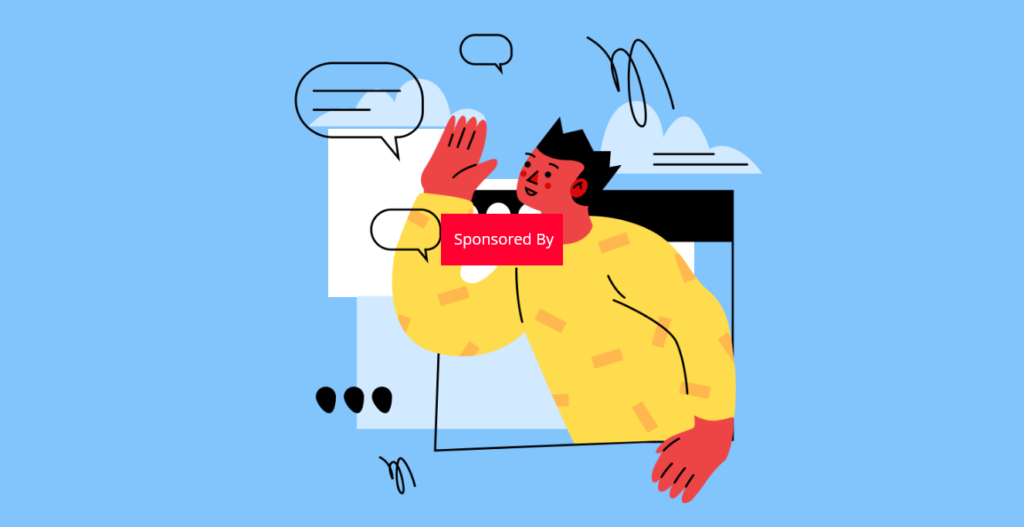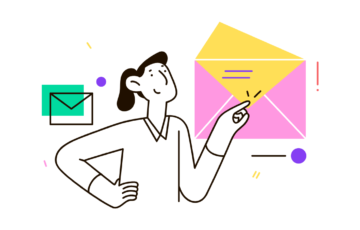
Email newsletter sponsorships are the fastest, most cost-effective, and excellent acquisition channel to reach a pre-vetted targeted audience to market your product and service or build trust among potential customers. You just need to do it right for higher impact.
When you sponsor a newsletter, you are targeting a particular niche audience. So just make sure you should deliver an appropriate and engaging message specific to that audience.
In this guide, you’ll learn all about email sponsorship, why to go for it, how to get started with email newsletter ads, email newsletter advertising rates, and where to find the best-suited newsletters for your business.
Why sponsor an email newsletter?
As a startup, marketer, or business owner, you need something that will help you to reach your targeted audience with a clear ROI, small to start with, and that you can reuse multiple times over.
Most software or eCommerce giants build their own content audience, but this process takes time and many productive hours. So it is better to spend that time developing your product, which is most crucial.
Email newsletters have a vetted audience who choose to subscribe by themselves because they are interested in the newsletter’s content or feel a connection with the publisher or the newsletter’s writer.
Depending on the readers’ perspective about the newsletter, they will most probably see your sponsorship ad as a sort of recommendation. This approach allows you to borrow the trustworthiness of the newsletter writer or publisher.
Why is email newsletter sponsorship better than other paid marketing channels?
Unlike overwhelmed advertising channels like Google ads, Facebook ads, and other social media ads, newsletter audiences are highly engaged.
Newsletters have their own features like:
- They have their own trusted audience.
- Your investment in these resources can easily be tracked.
- You can use this channel multiple times over without exhausting it.
Other marketing channels also have privacy issues, fake accounts, need to deal with ad blockers, and visitors’ ad blindness. Newsletter advertising evades these challenges.
Worth note-taking:
- A newsletter’s subscribed audience is a strong signal of the audience’s interests.
- Newsletter ads borrow trust from the newsletter’s writer or publisher.
- Newsletters will often have a new audience of people you’ve never reached before.
Newsletter promotion is best for the DTC or B2B brands looking for more leads, sales, and sign-ups.
But before that, you need to take care of the following things:
- You need to find newsletters with the best suitable audience for your product/service.
- Choose the right ad placement slot and format in the newsletter for your brand.
Before searching and booking newsletters, you first need to know some basics to achieve better results from your marketing campaign.
Which email newsletter is best?
As you can see, digital ads are everywhere. Similarly, users’ inboxes are filled with newsletters received every day, many of which they don’t even remember they’ve signed up for, or from different brands’ email marketing campaigns to leverage the direct-email space. Readers are tired of this spammy, too frequent, pushy, and impersonal email newsletters that deliver meager value. Best newsletters are well-crafted, value-rich emails for their readers who get an impressive open rate and click-through rate as the mark of legitimacy.
The misconception that leads to a failed email marketing attempt is that many marketers think that the more extensive the list, the better the result, which is not actually true. The size of the list doesn’t signify the quality of the list. A small but highly engaging reader base is far better than such a massive list. Because in the end, you want a higher return on your investment or ROI.
What are the types of newsletter audiences?
There are five main newsletter categories.
- Technology and development
- Business and finance
- News and Politics
- Design
- Lifestyle
How to find newsletters for your product?
Before searching for a newsletter, keep in mind that effective newsletters are informational, not sales-driven.
First, you need to understand your customer base. And collect information like what kind of content they like to read, what problems they encounter, and how your product or service can solve those issues.
Now start your research to find newsletters in your niche. But keep in mind that every newsletter will tell you that they are a community of like-minded people, but often it doesn’t mean you will get a better result from it.
You can find newsletters through newsletter directories and the newsletters you already know.
Compare pricing to find the best deals. Remember, the most crucial factor isn’t the size of the subscriber base but the quality of the readers.
Things to keep in mind while sponsoring a newsletter.
- A quality newsletter has a straightforward narrative. The audience subscribed to the newsletter because readers know what it is about and what content to expect.
- The newsletters with an extensive subscriber base often have engaging audiences but a less focused readership. A small but niche topics work better than the big ones.
- You need to understand newsletter performance metrics, especially open rate, and click-through rate.
- A high open rate implies that the readers are interested in the content. The cross-industry average for open rates, according to this report, is about 32%. Anything higher than this is a good sign.
- Whereas high open-rate is not enough data to bet your money on the newsletter. The readers’ engagement is signified by the Click-through rate or CTR, which means how many of the readers clicked at least one link in the newsletter issue. As per the industry standards, a CTR higher than 10% is considered good, whereas it depends on the industry, as the newsletters in legal services often get 4% CTR.
- Newsletter demographics are a good thing to check while selecting which newsletter to promote, but it is not mandatory as most newsletter writers don’t collect these pieces of information.
- Pieces of information like
- Education status
- Average household Income
- Gender ratio
- Age groups
- Geography
- Marital status
- Household status (with or without children)
- Pieces of information like
How much does it cost to sponsor a newsletter?
Generally, a sponsorship slot can cost anything between $10 or $500, depending on the audience size and other metrics.
- A price under $25 is considered a good email CPM rate.
- CPC = (Total Campaign Cost)/(Subscribers * Click Rate)
So, for a campaign with a $20 CPM; 10,000 subscribers; and a 10% click rate, we’d do the following:
10,000 * 0.1 = 1,000
(10,000/1,000) * 20 = 200
1,000/2,00 = 5
According to these calculations, the expected CPC for this ad would be $5.
To keep your expenses low and better utilized, there are a few things that you need to do before approaching a newsletter sponsorship:
- Budget
- Are you planning to give commission for sales or engagements based on the newsletter?
- your marketing content
- any relevant images or videos
- a dedicated webpage for the campaign
Types of sponsorship format and placements:
- Native email ads.
- hero or header sponsorship
- primary or mid sponsorship
- snippet or footer sponsorship
- Dedicated email
Things to consider while sponsoring:
- you get more clicks on higher placements
- images don’t necessarily boost performance
- banner ads get the lowest number of clicks.
How to track OKR or ROI on your newsletter sponsorship
There are two steps in a successful tracking of your OKR and ROI.
- Track traffic to your landing page
To track and analyze traffic coming to your website, use UTM tracking.
The UTM-based tracking system uses a set of domain URL parameters that helps to identify the source of traffic origin. So you can easily track the number of visitors that you have received from a sponsorship ad.
Source: This parameter identifies the specific source of the traffic. Like, website or newsletter name, etc.
For example: &utm_source=ic_sponsorship
Medium: This tag tracks the type of channel driving traffic on the website like email, paid social, organic social, etc.
Example: utm_medium=email
Campaign: You can give each campaign a name so that you can easily keep track of your sponsorship efforts.
Example: utm_campaign=ic_newsletter
Term: You can use this UTM tag to track and identify the search terms, key phrases, and paid keywords.
Example: utm_term=todo_app
Content: This parameter helps you to identify clicked links in the ad.
Example: utm_content=text_ad
You can use all the UTM parameters in a single URL. Like the following example:
//domain-name.com?utm_source=ic_sponsorship&utm_medium=email&utm_campaign=ic_newsletter&utm_term=remote_developers&utm_content=text_ad
- Conversions from page visitors
Now that your campaign brought traffic to your site, the next step is to track the conversions from page visitors. Bringing visitors to your website is just one part of the whole story, you need to focus on the conversion to get the most out of your efforts.
- Ask for proof of statistics.
- date of send
- number of subs
- exact open rate
- clicks on your sponsorship
This statistical data is not very relevant if you have your own tracking system in place but nevertheless, there is no harm in comparing the data with your collected data. Also, it’ll help you to rectify your campaign to make it more engaging for the readers.



